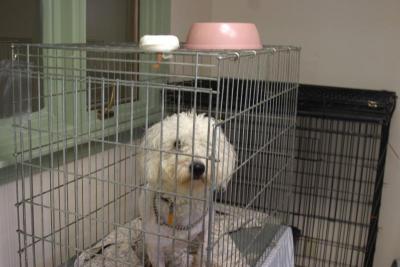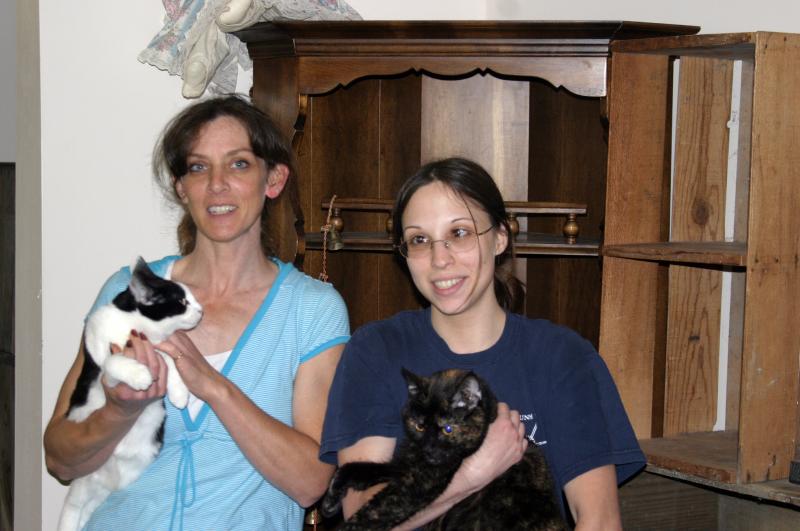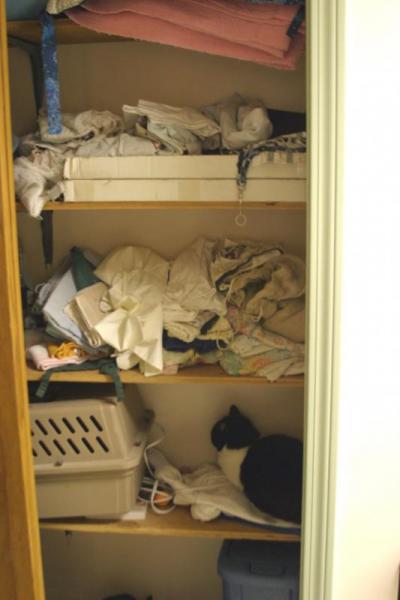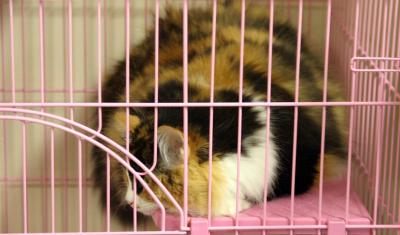A Helping Paw to pets and their owners needs a paw for itself

If you think moving to a new home is a pain, imagine moving with 20 cats and three dogs.
That's what A Helping Paw Humane Society is facing, as they open their new facility at 3086 Cranberry Highway after being forced to relocate because of unresolved maintenance issues at their previous location.
And it's a very tough time to move. It's "kitten season," and the poor economy and housing crash has left many cats suddenly homeless.
"Everybody thinks they're cute, they'll get a home" when they drop kittens off, said Shelter Director Chrissy Tomkiewicz. "But unfortunately, there are just so many of them."
Plus, each cat costs the shelter over $100 to "vet," which includes a full medical checkup and vaccinations, "fixing," etc. before it can be adopted. Plus, the no-kill shelter has to feed and care for the animals that have yet to find a home.
"We want to give each animal its best start in the new home," said Tomkiewicz. "We're looking for a lifetime commitment," which means working with the potential adopters to find them the perfect pet based on the animal's personality... not its looks.
It is the most important, but not the only, way that A Helping Paw distinguishes itself from other shelters.
"This is not the barking dogs, mewing cats and chaos, shelter," said Tomkiewicz. "We offer as much a home environment as possible."
Even as they are not fully-opened there is plenty of "homey-ness," perhaps an overload, in fact. The shelter operates a thrift store, so you enter the building and it is a full of donated antiques interspersed with cages.
The larger of the two "visiting pet" rooms contain furniture with lots of nooks and ledges for approximately ten cats (at least at first count, but we opened a closet to find one nested among the linens) to curl-up in, as they wander in and out of their cages.
"Pet people are amazing people," Tomkiewicz said. "They may not have a lot of money in the bank, but they help out in other ways."
And another way in which they help is by donating time. Wareham resident Kathleen Bailey has been volunteering all day Thursdays for two years, and was thrilled by the big news of the week - Stanley had found a home.
"Oh, I can't pick one of the animals over the other," she said, when asked if Stanley was a particular favorite. "It's like my children."
Nevertheless, they still face many challenges, according to Tomkiewicz.
Wareham has the area's largest population of feral cats, which are often brought in to the shelter when caught. Housing foreclosures also don't help, as suddenly a person with two cats loses their home and has to move in with relatives who may have allergies or rent an apartment that doesn't allow pets.
Nevertheless, they still face many challenges according to Tomkiewicz.
Wareham has the area's largest population of feral cats, which are often brought to the shelter when caught or when a litter of kittens is found.
The feral cat population is "sizable and formidable, and it is difficult at best for one animal-control officer to handle," said Animal Control Officer Carlston Wood. "A Helping Paw has helped us out in that area."
Housing foreclosures also don't help, as suddenly a person with two cats loses their home and has to move in with relatives who may have allergies or have to rent an apartment that doesn't allow pets.
Despite the obstacles, the staff at A Helping Paw hopes that the new facility should spark donations and awareness of the animals' plight. They are offering sponsorships of "bricks" for $25 to help with the renovation costs, and they are excited that they will be in a more manageable space.
"It will be cleaner, nicer, neater," said Bailey, explaining that the previous location had been primarily unfinished. "I think people will like it."
Like their animals, they're looking to give themselves the best start in their new home.

















